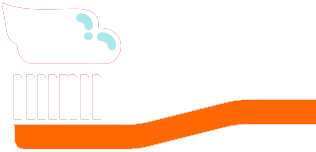Often, we seek braces as a solution for crooked teeth. However, there are instances where our dental problems come from our bites or the way the upper and lower teeth line up. Two common types of poor bites are overjet and overbite. These two conditions can be severe but are highly treatable—and understanding these conditions will help you determine the best plan for you or your child to get a confident and straight smile.

Overjet vs. Overbite: What's the Difference?
Medically Reviewed By Colgate Global Scientific Communications
Overjet vs. Overbite
Before identifying the treatments for these two conditions, it’s worth noting their differences. According to the University of Michigan Health Library, overjet teeth happen when the upper front teeth push outward. This condition is also known as “buck teeth.” To get even more specific, the New South Wales Government defines overjet as a horizontal misalignment between the upper and lower front teeth. When the alignment between these teeth is normal, the upper front teeth sit roughly 2 millimeters in front of the lower teeth. Overjet describes a condition where the horizontal separation is greater than 2 millimeters. This image, courtesy of MedlinePlus, provides an example of what overjet looks like.
Overbite, on the other hand, refers to a vertical misalignment between the upper and lower front teeth. To put in other terms, an overbite, according to the American Association of Orthodontists,is a condition in which the upper front teeth excessively overlap the bottom front teeth when back teeth are closed. It’s also called a “deep bite” or a “closed bite.” Overbites are a reasonably common condition. A review of studies in the Dental Press Journal of Orthodontics revealed the prevalence of overjet and overbite in the global population. Approximately 20 percent of individuals studied, including children and adults in the U.S., the U.K., India, China, and several countries in Africa and Europe, exhibited an overjet. Approximately 22 percent had an overbite.
What Causes Overjet and Overbite?
Overjet and overbite are both types of “malocclusions,” which is the Latin term for “bad bite” and the word orthodontists use to describe teeth that do not fit together correctly. The causes for these two types of malocclusions can be due to the jaw’s size or shape, typically if the jaw is smaller or larger than normal. If a jaw is too small, teeth can grow misaligned, and if a jaw is too large, teeth can drift or move around. Other causes can be due to tooth loss, thumb sucking, or the use of pacifiers. A 2016 study in The Journal of the American Dental Association found that pacifiers pose a higher risk of developing a malocclusion than thumb-sucking; however, both are known causes.
Symptoms of Overjet and Overbite
Symptoms of overjet and overbite can be appearance-based—but they can also cause more serious issues with your oral health. Signs of malocclusions can be:
- Abnormal teeth alignment or appearance of the face
- Crooked teeth that may stick out, also known as “buck teeth”
- Difficulty or discomfort when chewing or biting
- Speech difficulties, like lisp
- Mouth breathing
If you’re concerned about overbite or overjet in you or your child, set up an appointment with your oral care provider or orthodontist for an exam, as these symptoms can cause oral pain as well as emotional pain and loss of confidence. The Canadian Dental Association (CDA) explains that protruding teeth have a greater risk of being broken or chipped. Additionally, an overbite might cause problems with pronouncing sounds made with the tongue tip, as well as "s" and "sh" sounds. This is why it's essential to treat these misalignments, especially if they interfere with the teeth’ normal functioning.
Treatment Options
Don’t worry—there are ways to get your or your child’s teeth back into proper alignment. Treatment for overbite and overjet typically involves the use of orthodontic devices, surgery, or a combination of both. While the methods and appliances used to correct both issues are similar, your team of dental professionals will tailor your treatment plan to your needs.
Here are a few common ways your orthodontist or oral surgeon may treat overjet and overbite:
- Teeth removal: Because overcrowding is a cause of teeth protrusion at an early age, your oral care provider may remove your child’s baby teeth to make room for permanent teeth.
- Growth modification therapy: According to HealthLink BC, growth modification is part of a two-part orthodontic treatment plan for children with poor bites. When children are going through growth spurts, their orthodontist may fit them with growth modification gear, or appliances, depending on their needs, such as headgear, a Herbst, or a Bionator.
- Braces: Braces move the teeth to correct misaligned teeth and bites. They can also help move the jaw into the proper position.
- Surgery: While braces are ideal for children with overjet and overbite, adults typically have to turn to surgery to correct these conditions. That might involve reshaping the jaw to be longer or shorter. Your oral surgeon may also use screws, plates, or wires to stabilize the jawbone.
When to Correct Overjet vs. Overbite
Again—your or your child’s treatment plan will depend on the severity of the case, so it’s best to set up an evaluation with your oral care provider or orthodontist. If you’re wondering what age is appropriate to visit the orthodontist, the American Association of Orthodontists says no later than seven years old.
Everyone deserves a smile that makes them feel great. If you or your child is experiencing overbite or overjet symptoms, it’s critical to contact your oral care provider for an evaluation. While it may seem like a cosmetic problem, it could lead to other issues down the road. Plus, once treatment is complete, you or your child will be able to enjoy a straighter smile and the boost of lifelong confidence that comes with it!
Oral Care Center articles are reviewed by an oral health medical professional. This information is for educational purposes only. This content is not intended to be a substitute for professional medical advice, diagnosis or treatment. Always seek the advice of your dentist, physician or other qualified healthcare provider.







